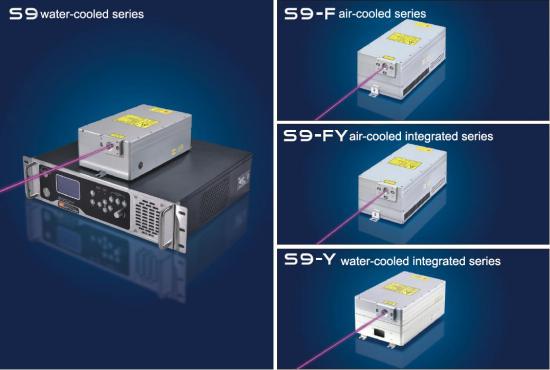레이저 마킹 작동 방식
Mar 22 , 2022How Laser Marking Works
Laser marking is literally everywhere – from the keys on your laptop and the dashboard of your car, to the milk carton in your refrigerator, to the logo on your golf clubs, to the instruments used by surgeons. In fact, marking is one of the biggest applications for lasers today because it has so many advantages over other methods, like printing. To give one example, lasers can easily produce a permanent mark on most materials that won’t come off or get smudged, even when the item is handled a lot.
The two types of laser marking
If laser marking is really everywhere, does that mean anything can be marked with a laser? Well, just about. Even diamond, the hardest material known, can be marked with our lasers. And, that’s actually an important use, because it produces a small but indelible mark that doesn’t change the appearance of the stone, but uniquely identifies it and helps cut down on fraud.
So how do lasers actually mark something? That really depends on the object - what it’s made of, what you want the mark to look like, and how it’s going to be used. But, in the broadest sense, all laser marking pretty much falls into just two categories:
Marks that produce a color or contrast change in a surface
Marks that involve removing or changing the texture of a surface
Removing material is really just engraving, which is familiar to just about everyone and pretty easy to understand. In this case, the laser just burns off or vaporizes some material where it hits the surface. So, making a mark involves tracing out the letters, numbers, barcode, or graphics you want by moving (or scanning) the beam around. Sometimes the grooves that are produced are then filled with a material that contrasts with the original surface color to make them more visible, just like with traditional engraving.

uv laser | green laser | Ultraviolet lasers | uv dpss laser | nanosecond laser | UV laser source | Solid State Lasers
Marking without disrupting the surface
There are quite a few different ways to use a laser to make a color change, depending upon the material you’re marking. But, in nearly all of them, the idea is to create a high-contrast mark that can be easily read (by a person or machine) — without damaging the surface.
In white and transparent plastics, the laser can make a dark mark by heating (and carbonizing) the material. On the other hand, colored and dark plastics can be photobleached. That is, the plastic can be faded or made a lighter color by the laser. And, this same laser bleaching method is used to create nearly all the popular wear and distress patterns on denim jeans. Wood is also a material that is easily charred with a laser, and this is done to make plaques and notice boards, for example.
Another popular method for marking plastics is called foaming. It’s actually sort of a combination of engraving and color change. It’s used a lot to produce white or light marks on dark-colored plastics like computer keys. In foaming, the laser brings a tiny amount of the material to a boil and it cools as a hard foam. Similarly, “tactile marking” creates raised patterns that can be felt by anyone, including visually impaired people.
Why laser marking is everywhere — from the home to the car to the hospital
Laser Black Marking — the latest technique for marking metals
Lasers can even make color changes on metals. In fact, a fairly new method called “Laser Black Marking” is proving very popular for re-usable medical devices like surgical tools and endoscopes. In this scenario, an ultrashort pulse (USP) laser causes microscopic structural changes in the metal surface so it traps light and appears black – even though the material isn’t burnt, and there’s no obvious texture to the mark that can be felt. Makers of some premium electronic devices use this same method to mark logos and serial numbers on their products in a way that can’t be easily counterfeited or altered.
Matching your marking system to your application
특정 마킹 작업에 사용되는 특정 레이저는 재료, 원하는 마킹 모양 및 경제성(제조업체가 해당 마킹을 생산하기 위해 얼마를 지출할 의향이 있는지)에 따라 달라집니다. 사용 중인 다양한 방법과 각 방법에 가장 적합한 특정 유형의 레이저가 있습니다. 이것이 바로 코히런트가 레이저 마킹 시스템에서 광범위한 선택을 제공하는 이유입니다.
이것은 레이저 마킹이 어떻게 이루어지는지에 대한 가장 간단한 소개일 뿐이며 많은 레이저 마킹 응용 프로그램과 달리 실제로 표면을 긁었습니다. 하지만 책상, 사무실, 집을 둘러보면서 스스로에게 물어보십시오. 이전에는 전혀 눈치채지 못했던 레이저 마크가 얼마나 많이 보이나요?